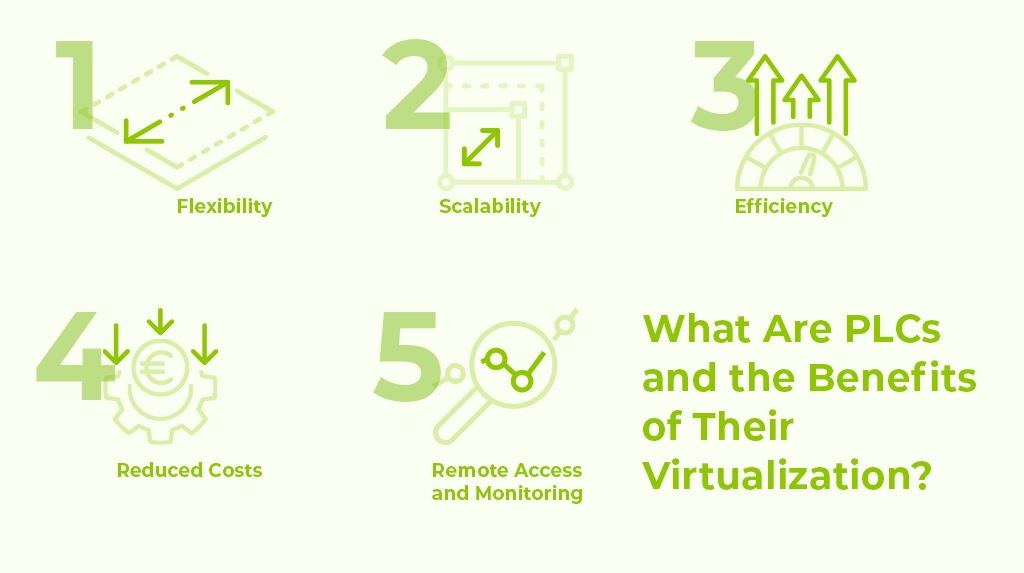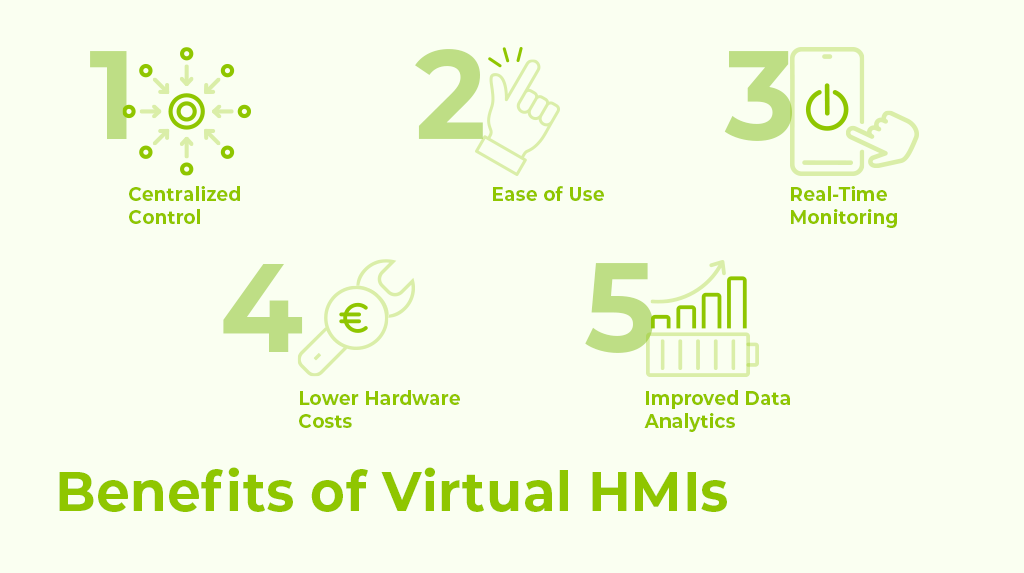In the manufacturing industry, particularly in packaging, the integration of digital technologies has become a game changer. Among the most promising innovations is the concept of virtualization, which has significantly impacted process automation and management. Virtualization initially emerged from the IT sector, designed to optimize software management and reduce associated costs. Today, it’s making waves in process automation by allowing multiple systems and applications to run on a single hardware platform.
In traditional automation systems, physical hardware and software are tightly bound, meaning that each process application—whether for control, alarm management, or data collection—required a dedicated machine. This approach presents numerous challenges, including high hardware costs and maintenance requirements. Virtualization breaks this dependency, enabling various operating systems and applications to run simultaneously on a single physical server, optimizing hardware resources and increasing system flexibility.
For the packaging industry, virtualization offers an unparalleled opportunity to manage automated systems more efficiently. By leveraging thin-client technologies, users can simplify machine management, monitor production processes remotely, and optimize energy consumption—all while maintaining a high degree of flexibility and scalability.
1. What Are PLCs and the Benefits of Their Virtualization?
A Programmable Logic Controller (PLC) is an industrial digital computer designed to control production processes and machinery. PLCs monitor real-time inputs and outputs to regulate machinery, automate processes, and ensure smooth operation across an industrial plant. In essence, PLCs act as the “brains” of a manufacturing process, executing programs that optimize productivity and safety.
With Industry 4.0, the virtualization of PLCs has become an increasingly important topic. Virtual PLCs offer many advantages over traditional, hardware-based systems. The virtual versions operate as software applications hosted on virtual machines (VMs), eliminating the need for dedicated hardware.
Benefits of Virtual PLCs:
- Flexibility: In a fast-paced industrial environment, production lines must frequently adjust to accommodate different products and requirements. Traditional PLCs require manual reconfiguration to meet these needs. Virtual PLCs, however, allow for multiple configurations and customizations simultaneously, which translates into faster production cycles and more efficient use of resources.
- Scalability: As factories expand, the limits of traditional PLCs can hinder growth. Virtual PLCs, on the other hand, make it possible to scale automation processes by developing and testing new control strategies in a virtual environment before implementing them physically. This flexibility minimizes the risks of errors and reduces expansion costs.
- Efficiency: Virtual PLCs can be integrated into industrial edge computing, enabling the separation of hardware and software management. This makes it easier to automate processes in a centralized, data-driven manner, which improves overall production efficiency.
- Reduced Costs: By eliminating the need for physical hardware, virtual PLCs reduce equipment costs, including the costs of controllers, modules, and cabling. Additionally, virtual PLCs require less maintenance, as software updates are managed centrally and remotely.
- Remote Access and Monitoring: Virtual PLCs allow remote access and monitoring, reducing the need for on-site personnel and improving operational efficiency in remote or hard-to-reach locations.

2. What Are HMIs and the Benefits of Their Virtualization?
Human-Machine Interfaces (HMIs) are another critical element of modern automation. An HMI provides operators with a graphical interface through which they can control and monitor machinery. HMIs allow users to visualize real-time data, monitor machine performance, and adjust settings to optimize production.
The virtual version of HMIs, much like virtual PLCs, offers several advantages, particularly in today’s highly connected industrial environments. Virtual HMIs are software-based and can run on the same virtualized infrastructure as the PLCs, offering more streamlined control over entire production lines.
Benefits of Virtual HMIs:
- Centralized Control: A virtual HMI centralizes the control of multiple machines and systems, offering a single interface from which operators can manage the entire production line. This reduces the need for physical touchscreens or local monitoring devices, allowing for remote access to all critical data.
- Ease of Use: Virtual HMIs typically have customizable interfaces that make it easy for operators to navigate complex machine data. With improved user interfaces and simplified navigation, operators can control machinery with minimal training, reducing downtime and improving overall productivity.
- Real-Time Monitoring: By integrating IoT sensors and SCADA systems, virtual HMIs provide real-time visibility into machine performance, process conditions, and key performance indicators (KPIs). This allows for better decision-making, quick adjustments, and immediate response to any issues.
- Lower Hardware Costs: Virtual HMIs eliminate the need for physical displays and control panels. This reduces both upfront investment and long-term maintenance costs, as all software components can be updated remotely.
- Improved Data Analytics: With virtual HMIs connected to centralized databases, it becomes easier to aggregate, store, and analyze large amounts of operational data. This leads to better process optimization and more effective predictive maintenance strategies.

3. Remote Plant Management and OEE Analysis
The adoption of virtualized systems and IoT technologies has revolutionized plant management, allowing operators to manage and monitor equipment remotely. One of the key metrics for evaluating the performance of a manufacturing plant is Overall Equipment Effectiveness (OEE).
What is OEE?
OEE measures the efficiency of a production system by analyzing three key factors: Availability, Performance, and Quality. Each of these factors highlights potential areas of waste or inefficiency, allowing companies to implement targeted improvements.
- Availability: The percentage of time a machine is operational compared to the planned production time.
- Performance: The actual production rate versus the ideal production rate.
- Quality: The ratio of good products to the total number of products produced.
By leveraging virtualized systems, companies can enhance remote monitoring capabilities, allowing them to track OEE metrics in real time. This leads to faster issue detection, streamlined maintenance processes, and more precise performance optimization.
Read also: Smart Packaging, that is high quality yet without waste
4. IoT and Predictive Maintenance
The Industrial Internet of Things (IIoT) has ushered in a new era of predictive maintenance, which plays a critical role in modern manufacturing operations. Predictive maintenance uses IoT sensors and advanced analytics to predict when equipment is likely to fail, enabling proactive interventions before breakdowns occur.
The Role of Predictive Maintenance in Manufacturing:
Predictive maintenance allows manufacturers to reduce unplanned downtime, minimize repair costs, and optimize asset utilization. By continuously monitoring the condition of machines and using historical data to forecast future issues, predictive maintenance ensures that equipment operates at peak efficiency.
- Continuous Monitoring: IoT sensors embedded in machines collect data on temperature, vibration, lubrication levels, and other operational parameters. This data is then analyzed in real time to identify potential problems.
- Data-Driven Decisions: Predictive maintenance systems use machine learning algorithms to detect patterns in the data that may indicate wear or impending failure. When an anomaly is detected, the system can trigger alerts, allowing maintenance teams to address issues before they result in costly downtime.
Impact on Production: By adopting predictive maintenance, companies can optimize their production schedules, ensuring that machinery operates only when it’s in peak condition. This not only reduces operational costs but also improves product quality by minimizing errors or inconsistencies caused by equipment malfunctions.
In summary, the virtualization of PLCs and HMIs represents a significant leap forward in the digitalization of the packaging industry. By centralizing control, reducing costs, and improving system flexibility, companies can enhance productivity, reduce downtime, and stay competitive in an increasingly automated and connected world.


